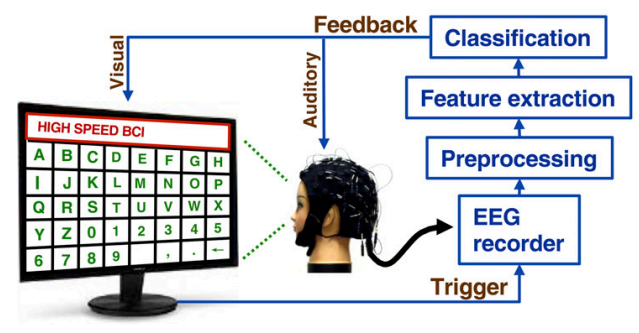Even the idea of not being able to communicate or control one’s body is crippling.
The frustration of restricted mobility, immobility and hampered communication with the environment can be well narrated by the affected ones only. The abilities taken for granted by the healthier people are a dream for the disabled!
This dream of the disabled has been artificially made to come true by the breakthrough in the field of assisted technology. Brain Computer Interfaces (BCIs) have potentially revolutionized the control and communication by transcribing brain activity into external functions.
The core aim of the rehabilitation programs is to recover or reestablish the lost control over mobility and communication. Over the years assistive technology has enhanced many of these rehabilitative approaches. Robotic assistive devices have been a relief for patients with motor impairment, who had limited residual motor ability. Having said that, robotics does not cater to those who are completely paralyzed and have no functioning output channels to carry out the signals from the brain. Here BCIs come to the rescue. BCI is independent of these normal channels of nerves and muscles, instead, it reads the mind!
BCI takes commands from the intentions of the brain by detecting the activation sequence in the brain, thus translating intentions into desired actions.

Another positive and recent trait of BCI is its non-invasive technology.
Earlier, brain implants were used to collect signals from the brain. Those implants required special surgical and medical care for obvious reasons. Non-invasive BCI supersedes that by using electrodes of electroencephalography (EEG) over the scalp to record the brain activity. Whether the signals are gathered invasively or not, those signals are then relayed to a computer or similar device, which after certain modulations sends appropriate commands to the prosthesis or robotic arm, ultimately initiating the intended action. Thereafter, visual or haptic stimulation can make quick changes in the performance, if required. However, the non-invasive method has been reported to be coupled with unclear signals.
Nevertheless, With further advancement, more emphasis is on studying the non-invasive approach due to its better safety profile and cost-effectiveness.
The initial BCI model was slower. This was because it was timed and partly dominated by the external signals. Therefore only a fixed repetitive action could be performed for a specified period of time with only two mental commands i.e. when to get ready and when to execute the action for the designated period of time. Recently, BCI has become INDEPENDENT OF EXTERNAL CUES. Thus the person can make real-time decisions.
Continuous brain signals through EEG can control when to start, when to halt and how to control the brain-actuated robotic prosthesis. Moreover, rapid corrections and spontaneous decisions can also be made.
Promising results with neuroprosthesis control with BCI has attracted researchers to explore:
- Real-time augmented communication
- Improved adaptability to practical life, for eg: learned behaviour to avoid obstacles while driving a wheelchair over subsequent attempts
- Better command over detecting higher cognitive states like abstract feelings (fear, confusion, happiness, regret etc) in order to improve compliance
- Improved feedback mechanisms to recuperate errors and manipulate skills for enhanced user training and accurate control over actions.
References
Leuthardt, E.C., Schalk, G., Wolpaw, J.R., Ojemann, J.G. & Moran, D.W. (2004). A Brain-Computer Interface using Electrocorticographic Signals in Humans. J. Neur. Eng. 1, 63–71.
Cincotti, F., Mattia, D., Aloise, F., Bufalari, S., Schalk, G., Oriolo, G., Cherubini, A., Marciani, M. G., & Babiloni, F. (2008). Non-invasive brain-computer interface system: towards its application as assistive technology. Brain research bulletin, 75(6), 796–803. https://DOI.org/10.1016/j.brainresbull.2008.01.007




